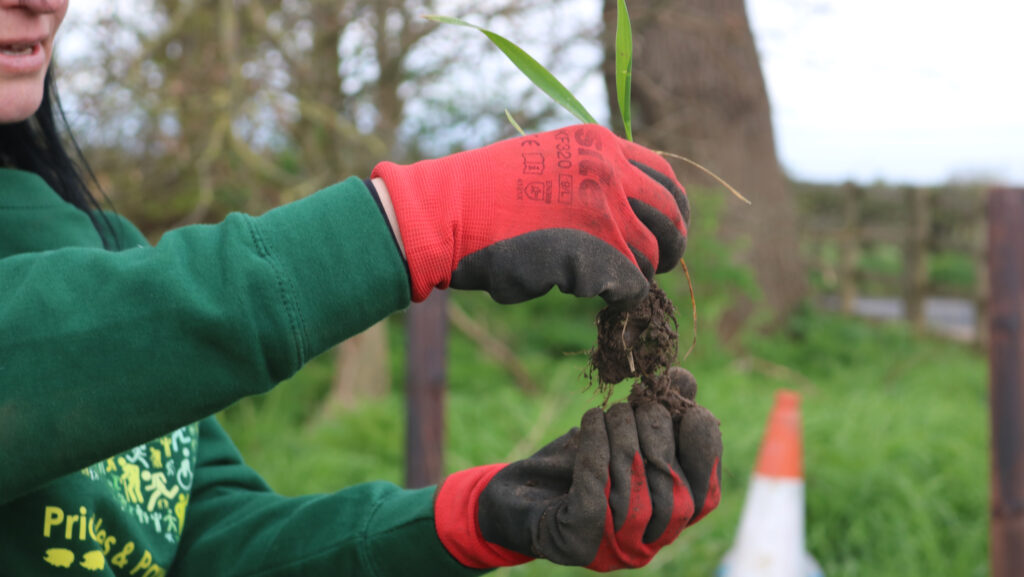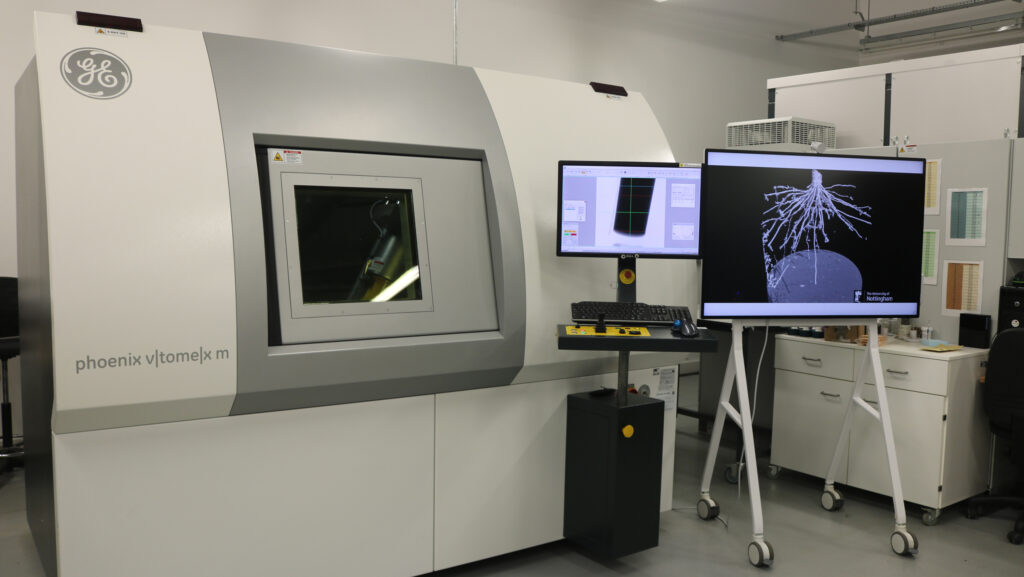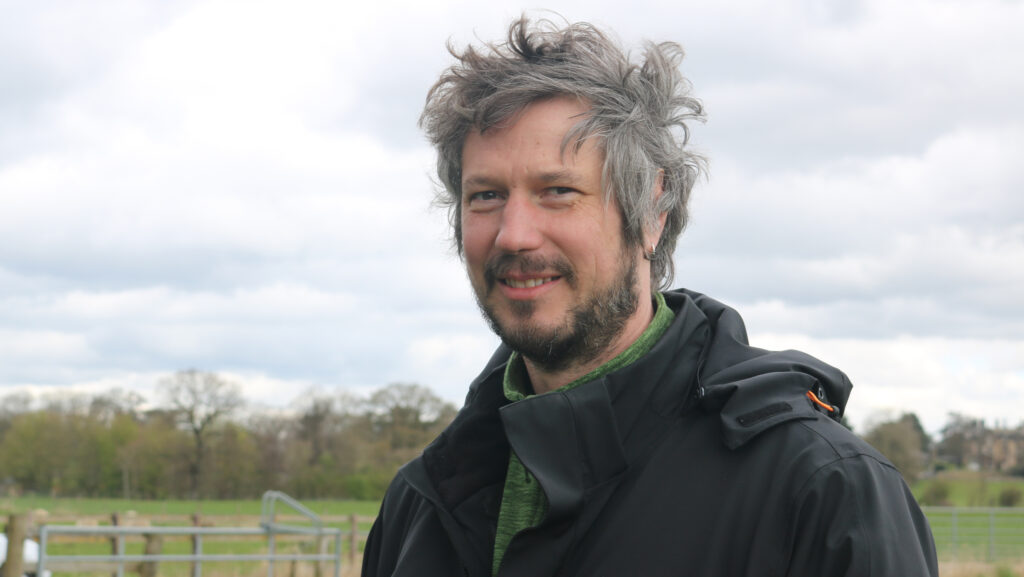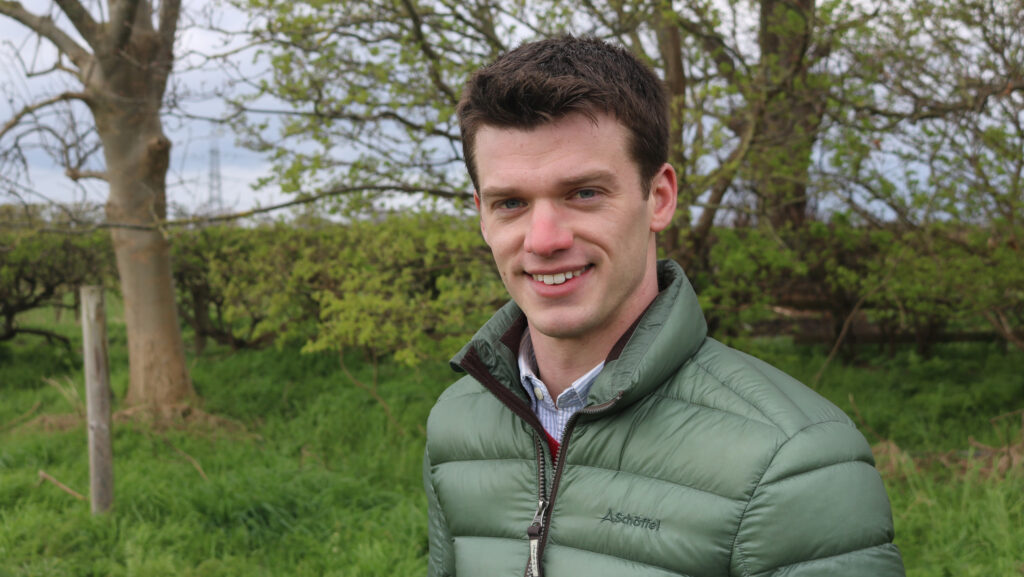Farm project explores soil microbiome and nutrient use efficiency
 © Bofin Farmers
© Bofin Farmers A new research project aims to improve farm productivity by unearthing the secrets of soil and root health through the development of a soil sensor that measures microbial diversity and fungal-to-bacterial ratios.
Specialists from the University of Nottingham and John Innes Centre will work alongside farmers in a £1m research collaboration to assess and quantify root growth and soil microbial activity.
The three-year project also hopes to identify wheat traits which improve nitrogen cycling, microbial biodiversity and soil structure.
See also: Advice on getting the most from Dawsum winter wheat
The focus is selecting wheat varieties not just for yield, but also for optimum root structure and beneficial interactions with the soil microbiome – traits likely lost in today’s modern wheat breeding programmes.
The project, called Thriving Roots Underpinning Total soil Health (Truth) is established by the British On-Farm Innovation Network (Bofim) and funded by Farming Futures part of Defra and Innovate UK’s Farming Innovation Programme.
“The overall intention is to gain a deeper understanding of the soil microbiome profile in various UK agricultural soils and to set up a knowledge exchange platform to inform sustainable soil management,” explains network founder Tom Allen-Stevens.
“There are plenty of good technologies to assess above-ground plant biomass such as green area index, but there is limited tech available to assess below-ground indicators of soil and plant health. This project is all about turning that around,” he adds.

© Bofin Farmers
Farmer sampling
The farmer-led research will see a group of farmers paid to take soil samples which will be analysed to build up a database on soil structure, porosity, and crop roots.
Microbiome analysis will also take place, before and after the final fertiliser application when root structure is well established and the impact of fertiliser and root deposits on microbial populations can be best assessed.
Samples will be taken from crop rows, between crop rows and bare soil in field margins where no crop inputs are applied and compaction is minimum.
Data will be collated to build a framework of the relationship between root and soil structure, as well as a fingerprint of the microbial communities within soil, explains Dr Maria Hernandez-Soriano, a postdoctoral scientist at the John Innes Centre.
“We hope to find out the differences in microbial activity according to soil type, geography, cropping, agricultural inputs and the impact of nitrogen fertiliser.
“This will provide information to help calibrate an innovative soil sensor from PES Technologies as a tool for farmers to monitor key soil health parameters,” she says.
Crop roots affect soil health
The Truth project also builds on John Innes Centre research that reveals certain root traits in certain crops have various effects on soil health, particularly the capacity of soils to supply nutrients, water and host beneficial microbial populations.
In year three of the project, the farmer group will grow heritage wheat varieties selected for their capacity to control microbial transformation of nitrogen in soil and enhance plant uptake and nitrogen use efficiency.
The selected wheat varieties are presently being multiplied to ensure enough seeds are available for the farmers.
These varieties are from the Watkins wheat landraces collection held by the Germplasm Resources Unit and have been selected based on the field trials results of the John Innes Centre Wish-Roots project.
Modern crop varieties are often the result of intensive breeding to improve yield, with next-to-zero breeding focused on root structure and wider soil interactions, says Maria.
“These selected heritage wheat varieties secrete a compound from their roots which reduce nitrogen loss from the root zone.
“The secretion of compounds from the heritage wheat cultivars reduce activity of single-celled organisms known as ammonia-oxidizing archaea, which are naturally present in the soil and convert ammonium into nitrate and eventually nitrous oxide, thus reducing nitrogen use efficiency by the plant,” she says.
Early investigations revealed up to 20% increase in the population of these archaea following nitrogen fertiliser applications, which accelerates nitrogen loss to the environment.
The aim is to provide genetic resources and predictive models to introduce beneficial root traits into wheat production programmes.
Meet some of the project farmers
George Renner, Rutland

George Renner © Bofin Farmers
Rutland farmer George Renner is one of the farmers involved in the project and notes it is a great opportunity to get first-hand soil health data relevant to his farming situation.
The family was an early adopter of direct drilling and has been doing so for 23 years. Direct drilling provided a significant establishment method to cut down on costs, but soil health benefits quickly followed.
“At that time, there was very little UK research on the benefit of direct drilling. Now there’s little research into soil structure, health and microbiology and this project should help overcome this.”
Ted Allen-Stevens, Hertfordshire

Ted Allen-Stevens © Bofin Farmers
Ted Allen-Stevens farm manager at Thrales End Farm near Harpenden, Hertfordshire, is another farmer who has signed up to project.
“The farm has been practising regenerative principles for the past 10 years, aiming to cut inputs and be as cost effective as possible with a real focus on improving soils.
“The core principle of regen agriculture is soil health and one of the first steps to improving this is understanding more about soil function, structure and what lives in it. This is where the importance of this project comes in.
“What’s more, farmers are being inundated with products claiming to benefit soil and crop health, but we need real data on our soils to be able to back these claims up,” he says.

